Meteorologist Millan Millan’s research work discovered that rain was disappearing because land use was affecting evapotranspiration rates. In this episode he talks about what we need to do to restore rains and ecosystems.
In the podcast excerpt below he talks about when he was working for the European commision, and was asked why the rain was lessening.
Millan Millan : “The information came in that there was a perceived loss of Mediterranean storms, and I was assigned to look into it. Most of the Mediterranean used to be covered with marshes as far as 2000 as years ago, and at that time it rained quite a bit, equivalent to 2000 liters per square meter per year. Recently, as people filled in the coastal marshes and lagoons, as power plants, oil refineries, and housing were built, the amount of water being driven in by the sea breeze went down, as did the frequency of the storms.
As sea breezes blows inland from the sea, the air has a water content of 14 grams per kilogram of air. It heats up by 16 degrees by the time it reaches 80 kilometers inland, which then requires a water content of 21 grams per kilogram of air to condense into rain.
The sea breezes develop because there is differential heating between land and coast. That differential heat drives the sea breeze, and at the same time it contributes to heating up the air mass that comes in from the sea, and that added heat, what it makes, is that the cloud condensation level starts going up. And if you overheat the ground because you get rid of vegetation or you build up concrete surfaces, they add heat but they don’t add moisture. In the old times you have a certain amount of heating, and a certain amount of moisture added from vegetation. The land cools itself by evapotranspiring the water. Eventually the air humidity reaches a condensation point and you have a summer storm developing some time in the afternoon. And that cycle would go on for almost every day. And the following day the moist soil would contribute to the vegetation transpiring and put the moisture into the atmosphere again, and you would see the same amount of water going around and around for many days during the summer. If you change the land use cover you change that cycle. Our calculations show that as soon as you change an area 6 miles by 6 miles the precipitation downwind is already affected.
That is also true in the Amazon. They find that as soon as they cut down about 36 square miles, precipitation stopped over that area. In the tropics 65% of the water that comes down during the rainy season in the summer, is water that precipitated during the three previous days. So 65% of the 2000 liters per square meter per year of rain, which is about 1300 liters per square meter per year, is the amount of water the forest requires to keep recirculating so that your net gain is the difference. The water that ends up in the river is the other 35%, capturing 700 liters.
Land use alters hydrological cycle immediately. When you cut a forest, or when you build a road, there is immediate change of a little bit. People say its too little, but its not too little, when you add a little, and a little bit more, eventually you hit a threshold, a critical point, and after you cross that point, your regional precipitation disappears.
Our results was first presented in San Diego, California in 1997, and the head of US forest service at the time, a fellow called Miller, said “if you what you said applies in California we will have serious problems with forest fires in about 25 years”
Reference:
Millan Millan’s research paper “Extreme hydrometeorological events and climate change predictions in Europe” ( https://traffic.libsyn.com/secure/museecology/2014_con_PORTADA_J.Hydrol.pdf

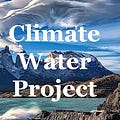





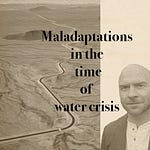
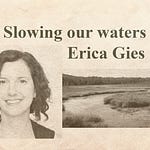

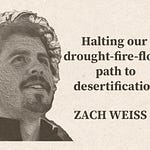
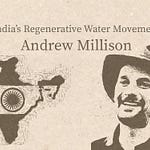


Land use and climate change : an interview with Millan Millan